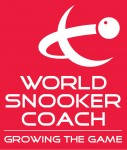In Search of the Perfect Cue
- By John Gillard
- 18 July, 2013
- No Comments
Many people spend years searching for the perfect cue: the cue which will take them to that next level. This can be an interesting and enjoyable search as you find out more about cues: the way they are made, the different woods used, the cues professionals use. It may open up the history of the game with research of antique cues. Having a cue you are happy and comfortable with is essential.
The search for a new cue, though, can often hide underlying issues with a player’s game. A new cue is often seen as a potential cure for perceived poor play or as a way to spice up the game. There’s no doubt a new cue can bring a new lease of life to a player but, once the ‘honeymoon period’ is over, any underlying issues come to the surface again. It may be the game in actual fact needs spicing up in other more long-term ways: a change of practice routines, playing different players, different venues, setting new goals, improving technique. Purchasing a new cue can be fantastic but, if it is to hide issues with your game, then it can be negative.
So what about this strange honeymoon period a new cue can bring, which so often fizzles out? For a time a new cue gives a single focus – the cue. This allows natural instinct to come to the fore and cast aside negative thoughts but, when the novelty of the cue wears off, so too does the single focus and the effortless instinct which has been allowed to take over on every shot. The mind starts to wander and looks for a different cure, usually at the expense of natural instinct. This single focus and using maximum natural ability can be harnessed in other more sustainable ways.
The effectiveness of a cue is how straight you can cue with it and how well you can judge the pace and spin of the shot. With some cues it may take longer to gauge the accuracy of pace and spin but, once you have harnessed these, the cue is your friend. It is then all about your effectiveness to use it. It doesn’t matter how ‘good’ or ‘bad’, cheap or expensive it is. Look at Stephen Hendry’s old £15 seven-world-title-winning cue.
If you have made the decision to purchase a new cue, it is vital to ‘measure up’ first. An unwise choice could embed any bad habits or even create new ones. There are two key things to measure. Firstly the cue arm. When you are down on your shot (with tip to cue ball) the cue arm from grip to elbow should not be too far from a 90 degree angle to the cue: the ‘pendulum’ position. This allows the cue to drive through the cue ball. The bridge hand should not be too close or too far from the cue ball (as a rule less than 10 inches between the ‘v’ of the bridge hand and cue ball is quite close, and more than 12 inches quite far). Once you have these in place, you will be able to measure how long the cue should be for you. A couple of inches of cue showing behind the grip is no problem. As an example: you purchase a 58-inch cue because it looks nice or your friend has one that length; you then hold the cue at the end of the butt and your cue arm is closer to 45 degrees to the cue; it is unlikely you will be able to cue freely and drive through the ball nice and straight. If you have a nice pendulum and bridge position but a cue that is too long, you may find a lot of cue behind the grip; this may well unbalance the cue. This work, prior to purchasing your new cue, is essential.
By ensuring you are purchasing a new cue for the right reasons and by getting the technique right first, you will not only find the right cue for the player but find the right player for the cue.


 Copyright © 2024
Copyright © 2024
Leave a Reply